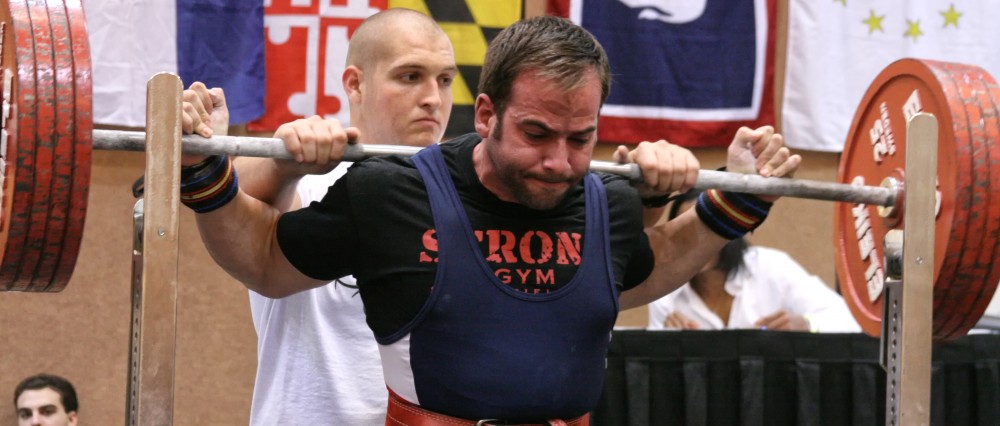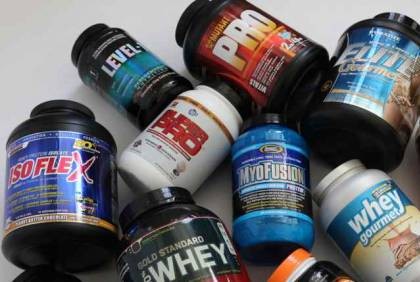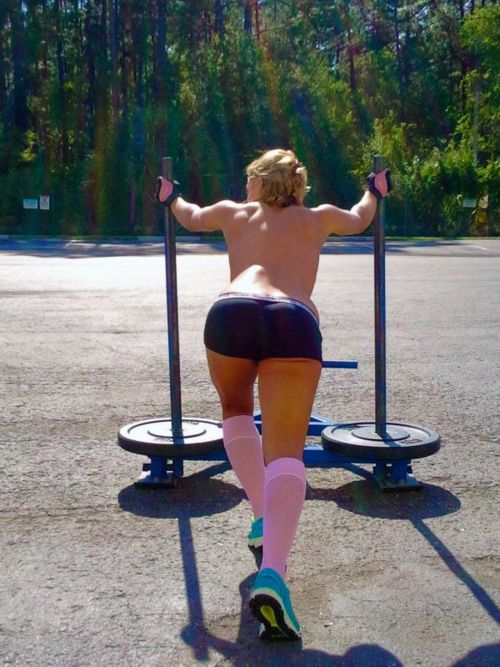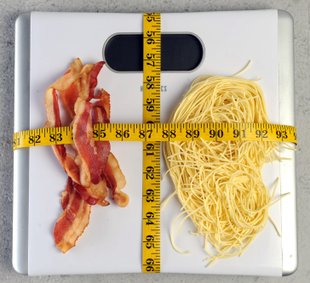By Jordan Feigenbaum MS, CSCS, HFS, USAW CC, Starting Strength Staff
I’ve been doing a lot of work with clients, the new website, and others (see Reddit AMA #1 and #2) and it’s got me thinking: What are the most important things in training that people are doing wrong?
Obviously this also tends to include things like nutrition, lifestyle factors, etc., but I’ve really been seeing a lot of common threads amongst people who need some help. So, without further ado here’s my Ultimate Top 5 List:
- Eat More Protein
All things being equal, more protein is better from a performance and aesthetic standpoint with the following caveat: if you’re weighing and measuring all your food anyway, this does not apply. Most people eating ad libitum, do not eat enough protein. This also includes people who are specifically looking to increase their protein intake on a daily basis, however, this generally results in 4-5 days of a decent protein intake but 2-3 days of sub optimal protein intake. It’s just not that palatable in and of itself and few people actually crave protein unless they haven’t had some animal flesh in a while.
That being said, I’ve consistently seen better results when it comes to strength increases, better body composition, and compliance on a dietary strategy when it has more protein in it. Don’t get this confused with me telling you that you need 400g a day to make gains, as this is hardly the case. What I’m saying is that most people, male or female, should be between 200-300g of protein/day based on their age (older=more protein), size (bigger=more protein), sex (females=more protein), and training status/frequency (more frequency/harder training= more protein). In addition, if you suffer from compliance issues, i.e. you fall off the wagon frequently, then more protein tends to help this as it is very satiating. Above all else, hit your protein numbers for the day and most other things will take care of themselves.
Lifestyle Hack: Immediately after training drink a protein shake. Repeat again before bed. This get’s you at least halfway there.
2) Do The Correct Conditioning Work
Most people undertaking a body recomposition phase in their life immediately start to do some sort of conditioning work concomitantly. Unfortunately, this often tends to be of the low to moderate intensity variety, i.e. walking on a treadmill, jogging, riding the bike, etc. While I applaud people for making healthy-ish changes in their lives, I think they could do a better job MORE EFFICIENTLY with some well structure high intensity interval training (HIIT).
The argument most people make about low intensity cardio being > HIIT is that “it burns more fat calories” and “burns more calories total”. Here’s the rub, low intensity cardio only burns a higher percentage of calories from fat than HIIT does. It does not burn a greater number of fat calories unless the total work done is grossly disproportional, i.e. someone is comparing doing 1 hour of cardio vs. 5 minutes of HIIT. Additionally, I’ll concede that traditional cardio burns more calories during the actual activity, however HIIT burns more calories over the course of the next 16-48 hours (+/- 8 hours) via metabolic increases systemically.
The only really good rationale for incorporating low to moderate intensity cardio in someone’s regimen (who isn’t an endurance athlete) is to just provide a calorie burn without expending the effort of HIIT (it’s much harder so you can’t do it all the time, especially if you’re on a massive deficit), or the person simply cannot muster the requisite effort or drive to push themselves to the limit during the HIIT. The magic is in the intensity. If the intensity isn’t there, then don’t bother.
Lifestyle Hack: On your off days (optimal) or at the end of your training sessions (okay) do the following protocol: 5 minute warm up, then 7 rounds of 30 second sprints followed by 3 minute rest periods. Cool down with 10 minutes easy effort.
3) Train Economically
Most people screw the pooch on this one, thinking they need to hit all sorts of variety and complex training to reach their goals when in fact, some form of either linear progression or rudimentary periodization will work just fine (outside of competitive lifters).
If you’re a beginner/novice, all you need to do is hit the big exercises 2-3 times per week and add weight to the bar each week, BECAUSE YOU CAN. If you can no longer do this, you’re not a novice anymore and thus, should not be on a novice program.
After the novice program ends, you do not need a 4 day split with all sorts of fancy accessory exercises in order to drive progress. What you need is consistent exposure to the movement at various levels of intensity (weight) and volume (reps x sets). Complexity can come later, when you need it.
Lifestyle Hack: Pare down your training template to the bare bones: squat, deadlift, press, bench press, chins, and power cleans. If you’re going to add anything, it better be a curl variation, a triceps exercise, and some abs. Everything else can stay in everyone else’s crappy program.
4) Eat the Right Amount of Energy
This should go without saying, but it’s not fat OR carbs that make you fat. It’s too much of either, or more often, too much of both. For the strength or anaerboically inclined athlete, carbohydrate is a much more effective fuel bioenergetically and I’d try to persuade this population to shift to a high protein, moderate to high carb, and low fat style diet. On the other hand, someone who’s not really into strength or is an endurance athlete would benefit from being efficient at using fat as a fuel in addition to carbohydrates, as fat is very important in long endurance efforts. For this population, I’d lean towards a high protein, low to moderate carb, and higher fat style diet. The biggest takeaway from this is that if overall energy is high, i.e. both carbs and fat are high, this will likely lead to unwanted “changes” in the body unless you’ve specifically added small amounts of carbs and fats to the diet incrementally.
Note: both diets are high protein
Of course, all of these recommendations are in relative amounts and not exact. High carb to one person might be low carb to another and vice versa. The important thing is to choose which way you’re going to go and choose appropriately based on what you do and what you can comply with.
Lifestyle Hack: Eat lean proteins and veggies at most meals of the day. Add starch pre and post workout. Add enough fat to suit your needs at meals outside of the periworkout window.
5) Eat Enough Fiber
We’ve heard for so long from the mainstream medical community that we should “Get more fiber in!” Surprisingly, I’m mostly on board with this statement. Here’s why:
The rationale behind having a “fiber goal” is multifactorial. One, fiber is thermogenic in that it requires lots of energy to move it to the large bowel where the resident bacteria ferment it into a short chain fatty acid. Two, three, and four it tends to be very satiating, all things considered, lowers the glycemic index of meals, and controls for how much junk you can eat and still be compliant, i.e. 200g of carbs is different from 200g of carbs with the caveat you’re getting 35g of fiber/day too. Five, fiber levels have been linked to many healthy outcomes. Whether or not this is correlation, i.e fiber within the diet means you’re eating “healthy”, or causation, e.g. fiber ingestion itself is healthy, is unknown to me but it is what it is. Finally, fiber just eliminates one more variable in macro recs. If fiber intake is changing but carbs stay the same then the two inputs are not exactly equal in effect.
So there you go, the five things you and your friends need to be doing to take your performance and aesthetics to the next level! I’d love to hear from people reading this blog. What do you want to hear about next??
-thefitcoach





Jordan,
A few questions for you. Re protein, how many grams is the most that’s healthy/effective to absorb in one sitting? And how long should you wait before eating protein again?
Also, re your preference for doing HIIT on non-lifting days: won’t that interfere with recovery? I guess it’s a trade off between that and being too wiped out for HIIT on a heavy lifting day.
Also, should you wait to start HIIT until after you’ve transitioned to intermediate programming on all exercises?
We do not currently know what the tolerable upper limit is for “healthy” protein intake, but you’ll absorb every gram of protein (pretty much) you shove down your pie hole regardless of meal timing. On the other hand, data suggests that for an average size, average age, average x,y, and z, that about 3g of leucine per meal will maximize muscle protein synthesis. This can come from a protein “dose”, if you will, from as low as ~20g to as high as 50g+ depending on the protein source(s) and their individual leucine content. However, the extra protein, if you will above and beyond what’s needed to stimulate muscle protein synthesis is pretty good to have on hand in the blood stream to actually have the substrates available to package into skeletal muscle. In short, 40-55g/meal would be a good, stock recommendation. I’d wait at least three hours postprandial to eat again, but more optimally, ~4 hours.
The HIIT training is so low volume that it doesn’t really mess with recovery that much, if at all, acutely, and long term it will increase your ability to recovery from training via increasing your work capacity.
I’d wait for the HIIT until at least advanced novice stage unless someone’s obese.
Jordan, thanks for the article. Interesting stuff. Since you asked, it would be interesting what kind of programming other than TM do you consider for intermediate trainees (who have done a run of TM for about a year for example).
I like that topic but its totally dependent on the persons goals, interest, sport (if applicable), etc
Re: what we want to hear next
IIRC, you’ve promised us a Jordan’s Corner on Carbs. 🙂 The ones on Protein and Fat (MCT) were very interesting and helpful.
Fair enough. Carbs for the win.
No “lifehack” for getting fiber in? What’s the best way to measure that and if we’re coming up short at the end of the day, is it appropriate to just “fill in” the rest with a fiber supplement?
Any one in particular you recommend or have had good experience with?